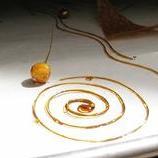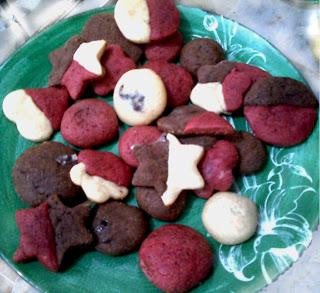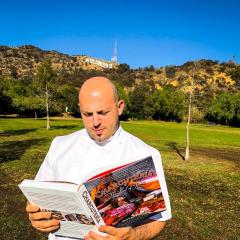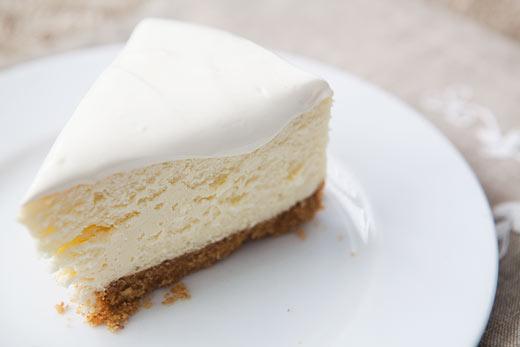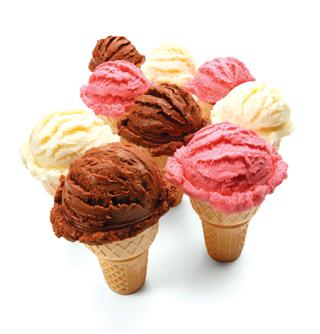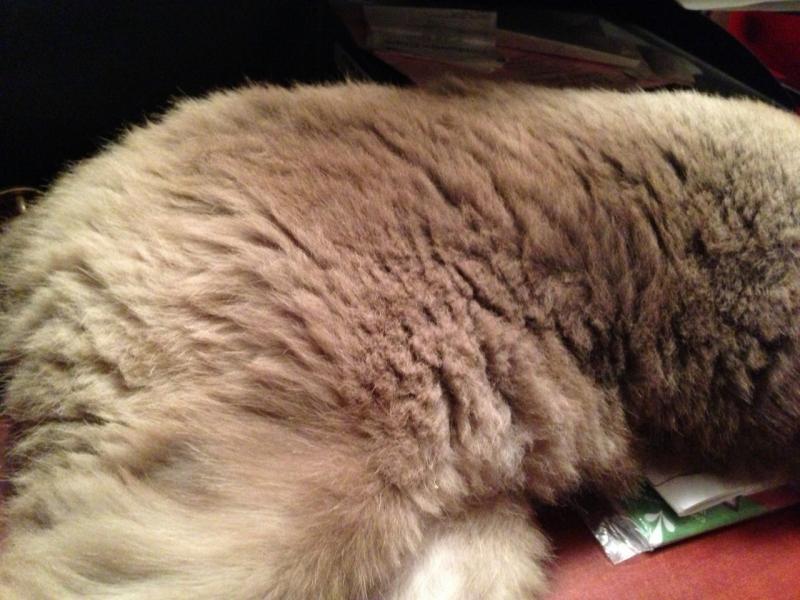Search the Community
Showing results for tags 'Reference'.
-
I don't eat a lot of fried foods, at least, I think I don't. A friend of mine who once worked in the restaurant business told me about Mel-Fry. I understand that it's a "bad" oil to begin with, that it is used to fry for a long time before changing it, and that a truck needs to come round and suck out the Mel-Fry to get rid of it. I am hoping that Willie Nelson's car is running on Mel-Fry. How bad is it and how prevalent is it? I'd never thought about my occasional Indian banana pakoora or Nathan's french fries or doughnuts as having been steeped in grotesque dirty chemicals. I guess another treat has gone out the window . . .
-
This is the philosophy hub of the English-speaking gastronomy world. This is the place where Douglas Baldwin posted his calculations and it is the birthplace of Modernist Cuisine. I bow down respectfully and really mean it. I am also well aware that society member Vengroff created the outstanding Sous Vide Dash. I myself have often used the information provided. As a matter of fact the project that I am about to present wouldn’t be the way it is without the influences mentioned above. On Tuesday November 11th we will release the Sous Vide °Celsius iOS app 3.0. An app with sous vide recommendations, timers and tutorials. Simple. It has been criticised in the past. It was criticised for not being worth its money. That hurt. So we sat down and tried to make it better. Sous Vide °Celsius is our distillate and experience about what works when using the sous vide technique. Food is never an exact geometrical shape. Waiting for an extra hour for a piece to reach the additional half degree is impractical. We tested sous vide recommendations that work and developed tutorials to make the first steps easy. The original was written in German. So we really need feedback from the English speaking world. We want this to be a useful app. An app that is worth it. Since its value is based on the content, it is more difficult to judge, but I am sure this is the right place to find out. I hereby would like to offer you the possibility to test the app before the official release. I have no idea how many of you will respond. Please write an email. I will reply with more information and a link to register as a beta-tester. My offer stands until November 10th or until I run out of promocodes to cover your free app after the beta-testing phase.
-
Recently took a big casserole cookbook out of our local library. Taste of Home Casseroles. Lots of lovely photos and over 400 recipes. Alas, many of the recipes call for cans of cream of this soup and that soup, packages of instant rice and potato mixes, refrigerated rolls and so on. And almost all the recipes were very North American. Not that I am damning these ingredients to the nether realms...I just want to know: where are the good casserole cookbooks? Are there any? Who has a title for me? Thanks.
-
Sweet and Vicious (Alex Day) with Bulleit rye (Old Overholt was specified), Dolin dry vermouth, amaro Nonino, maple syrup, muddled apple. A bit on the sweet side indeed (even though I had reduced the maple syrup), but with the Granny Smith that I used there was a nice acidity to balance things out. It reminded me of some Calvados-based cocktails that I like. As a side note, the muddled apple seemed to soak up the drink a bit, so it was a bit smaller than expected.
-
The team over at Modernist Cuisine announced today that their next project will be an in-depth exploration of bread. I personally am very excited about this, I had been hoping their next project would be in the baking and pastry realm. Additionally, Francisco Migoya will be head chef and Peter Reinhart will assignments editor for this project which is expected to be a multi-volume affair.
-
6 books outlining every dish they came up with over this time with essays etc. Appears to be about the size of Modernist Cuisine and has about the same price tag. I can't say I'm really that excited about it but I preordered anyway to add it to the collection as it wil surely be a historical record of what the pinnacle of that movement in cooking was about at the time. Even though it only shuttered 2 years ago, it seems like so much has changed in the culinary landscape. http://www.amazon.com/gp/product/0714865486/ref=oh_details_o02_s00_i00?ie=UTF8&psc=1
-
I must start by saying that I have huge respect for what Alex and Aki are doing. I adore their previous book and one of the first things I read in the morning is their website's mailing. In anticipation of Maximum Flavor (MF), I went back to the very beginning of their blog and read or skimmed through years of writing, witnessing how Ideas in Food have contributed to some of the big developments that characterize modern cuisine today. I live in Europe, where MF is not sold yet. I bought it through pre-order on Amazon, had it shipped to a US address and had a friend bring from there. Perhaps my expectations were too high, perhaps I have developed into a more sophisticated and knowledgeable cook over the last few years but this book was a major disappointment. The words that come to mind are: simple (selection of recipes), US focused (ingredients hard to find in Europe, brands, recipes) and unappetizing (photography, colors). This is not so say that this book is bad, but it is not a book for me any more. It is a book for a relatively average American home cook, how has somehow heard of Aki and Alex, and is willing to improve their pancake, burger and cake making. I have cooked successfully enough of complex dishes in full from Alinea, Eleven Madisson Park, Momofuku, Modernist Cuisine etc and I was craving something that would help me come up with complex and unusual flavors, that Alex and Aki can do so well (very noticeable in the first years of their blog), or even the big brother for their previous book, with more flavor enhancing techniques and brilliant recipes. In the entire book, there are perhaps two or max three things new to me, such as sugar syrup roasting nuts, the konbu beans combination and I cannot think of the third one. Also, I find a lot of ideas lacking originality - microwave sponge cakes or rough puff pastry are not exactly what I hoped to find there. I would sent the book it back but shipping costs from EU to US may outweigh the refund I can get - will look into it though. I understand this book may have a significant (US) mass appeal and be commercially attractive for the authors, I somehow feel that their brand has been diluted for me. I will never again buy a piece of their writing without having it seen first and making sure that it is what I expect it to be. [Host Note: Amazon Society-friendly link to Maximum Flavor by Aki Komozawa and Alexander Talbot]
-
This Recipe that I am going to share, its by my mom. We used to have these cookies since Childhood. To me its a very traditional Recipe. any flavors you want to add, all depending upon your taste. I used Chocolate, Vanilla and Raspberry for that. Same recipe goes for all cookies with distinct use of essences and food colors. Well here we go, it makes about 20 to 30 cookies, enough for your family while having tea/coffee. I love its crunchy texture outside and softy material of a classic cookie from inside. So for making a cookie you gonna have: COOKIES HOMEMADE: You will need: 1/2 cup unsalted Butter/clarified Butter 1 cup Sugar 2 Eggs 1 tsp Baking Powder Milk 1/4 cup(Use Milk as required, dough should be soft, add it if you feel stickiness) 2 1/2 cup Flour Vanilla Essence(or any flavor you like to have in cookies) Steps to Follow Beat Butter and Sugar. Add Sieved Flour & Baking Powder. Add flavor , Essence, Eggs, make a dough. Add some warm milk if you feel to have in your Dough. Make a soft dough. Then cutout soft cookies and Bake. This Recipe works for simple Vanilla Cookie. I filled my cookies with small pieces of Dark Chocolate. If you need some amendments or more flavors, add Cocoa Powder or Raspberry Essence with Red Food Color as I did.
-
Hi everyone, Its been several years since I've posted on this forum but hope to get involved more in the future now that I've changed jobs! Anyway, before buying Frederic Lalos' book, I mulled over buying it for almost 1 year. There is very limited writeup on this book and surely others would be going through the same decision making issues. In addition, we'll never know when this book'll be out of print. The reasons for my reluctance to purchase it is that here in Asia, this book + shipping from Europe would cost more than US$120. Do I really need to spend that kind of money when Hamelman, Dan Leader and Reinhart and other books would cover it? Thanks to my new job, I decided to buy it and it was the best decision I ever made. Firstly, this book touches on lots of basic knowledge covered in other books in terms of kneading, flour types, etc. Bear in mind that the recipes in this book use French flours, which are not as strong as American flours. Asian bakers may rejoice because our flours are quite similar in strength. Here in Bangkok, and in Singapore where I come from, we can get flours from Waitrose and other Italian as well as German flours. The most important aspect of this book for a professional baker or a serious home baker is that there are recipes dedicated to direct proofing, delayed overnight bulk fermentation method and a deferred overnight proofing method. All in the same recipe. This gives you timings and recipe options to better plan your baking. In addition, he gives the exact starting temperature and recommended end of mix temperature to ensure that the bread grows at the suggested pace. I have not come across any other bread book that is so detailed in this aspect. There are a lot of interesting French breads in here, but if you are looking for something really uniquely European, Dan Leader's book 'Local Breads' may be more your thing. However, if you are looking to get a first hand insight into how a professional baker executes his recipes, Frederic Lalos' book is exhaustive in this aspect. This link gives a more thorough review for this wonderful book. I as well give links to where to buy this book, with no commercial benefit of my own. I hope this review will help in your purchase making decision because it was something I wish I had after hours of fruitless web research.
-
Chef Andrew Taylor takes his forays into the Cascades to a new level as chef/owner of Eventide Oyster Co. in Portland, Maine. Writer Sharon Kitchens joins him and co-owners Arlin Smith and Chef Mike Wiley in a skiff around the shoreline and come back loaded with interesting stuff: http://www.huffingtonpost.com/sharon-kitchens/beach-foraging-maine_b_3372621.html Peak foraging season runs mid June to end of July here in the Northestern USA
-
The title "It's Only Slow Food Until You Try to Eat It" does not really give one an idea of what this book is really about. The subtitle: "Misadventures of a Suburban Hunter Gatherer" is much more descriptive of the contents. First of all, it's got a lot of very funny writing. And there are some real "characters" that the author describes so well that I felt I could shake hands with them. I highly recommend this book for anyone who really loves food and wonders why we eat what we eat and what happened to the things that once were common on the tables of America - or for that matter, other countries where it is difficult to find anything but "factory food" unless one lives in a truly rural area. Here is the review I wrote for Amazon. I received the book via the Amazon Vine program so am required to publish a review but this is one I would have reviewed anyway. Funny, enthusiastic, witty and insightful. This is really a remarkable book because it looks at things that we see every day in a different light - that is, consider how many times you may walk past something that in the past was a source of food for many of our ancestors. And not just Native Americans but ordinary folks like me and you. I grew up on a farm in the 1940s when most of the people in the area still gathered wild "greens" in the spring, pawpaws, maypops, berries, wild asparagus, onion grass, ramps, plantain, watercress, mallow, nasturtiums, nettles and purslane as well as the wild mushrooms that only the experts in the family were allowed to pick. There was also hunting and fishing, finding bee trees (for the local "bee charmer" to harvest). The author writes with wonderful humor and modesty in that what he was doing is often labor intensive but certainly for one who truly believes in eating what is available for free (and often tastier than anything in the stores) it is worthwhile, totally satisfying. He writes about his backyard garden and reading his description of a homegrown tomato and the incredible flavor, causes me to wish that I had managed to find the effort to plant some this year. I am growing herbs, onions, shallots and radishes but thats it for this year. His description of his adventures in Cajun country had me laughing out loud and the writing makes the scenes so vivid that it is easy for me to picture exactly what was happening. We hunted frogs when I was a child but we used long-handled fish nets because my grandpa was afraid we would stab each other (or ourselves) if we had gigs. The rule was, if you caught it, you cleaned it once one was old enough to handle a knife safely. His trip to Alaska to spend some time with the Native Gwich'in people of the Alaskan tundra is equally inspiring. It also points up the problems these people are having with the attempts of the oil companies to exploit an area that is CRITICAL to the continuing success of the caribou as the ANWR area is their calving ground and not even the natives go there because it is important to not disturb the routine that has been going on for hundreds of thousands of years, or longer. Foraging around San Francisco can be successful but the writer indicates that some people appear to be in it only for the notoriety (or the money) and not from any personal conviction about sustainability. The local expert who takes him on a seafood excursion is at the other end of the spectrum, doing it for the sheer pleasure of finding something that other people do not even realize is there. And, it is also a love story... I recommend this book to anyone who likes to read about urban ADVENTURES that anyone can have if they take the time to look around and actually SEE what is there if one just bothers to take some extra time. I wish that I was still physically capable of doing some of these things but age and arthritis forbid it. Meanwhile I can enjoy the experiences of writers like Bill Heavey vicariously through his evocative writing.
-
I work in Seattle and recently got hired on as a lead line cook at an upscale Mexican restaurant. I was hoping to get some pointers on either books to read or places to do research about modern Mexican cuisine. Thanks!
-
Hello All! I wanted to share some great news-- my friend, French cook and culinary instructor Kate Hill, is bringing famed butcher and charcuterie master Dominique Chapolard for a bunch of workshops. There's still seats available at some of the sites--here is a link with the details: http://kitchen-at-camont.com/2013/02/24/two-day-workshops-in-the-usa-the-french-pig-making-farmstead-charcuterie/ TTFN, jeff
-
- Charcuterie
- French
-
(and 1 more)
Tagged with:
-
There doesn't seem to be anything in the threads about spice cookbooks. I just bought The Book of Spices by Frederic Rosengarten, Jr. Copyright 1969. (He has a nut book, too, different thread.) Fabulous illustrations. I also have McCormick's Spices of the World Cookbook and The Spice Cookbook by Avanelle Day and Lillie Stuckey. Anyone have opinions or recommendations?
-
A collection of cooking infographics was posted on a graphics site a few days ago - I have enjoyed looking through them all and thought they were worth sharing.
-
Hi everyone, I just had to re-sign up since it's been awhile I wanted to let you all know the awesome news that I will be releasing a book at the end of the year about my time learning the charcuterie and butchery of Spain. It's called Charcutería: The Soul of Spain, and will have a foreword by James Beard award-winning chef José Andrés. The book is going to have a bunch of traditional techniques and recipes for Spanish charcuterie and pork butchery, as well as recipes and other little tricks I picked up working with the folks in the Extremaduran countryside. My photog and I just got back from visiting Spain for the photoshoot and the guys up in Asturias did a little video about it. Here's the link to the video: http://www.whereisasturias.com/?p=6602 And a link to our FB page (Lots more photos... please like!): https://www.facebook.com/charcuteriaspain?ref=ts&fref=ts Please feel free to write me if you have any requests or questions for the book--really trying to make something that my fellow meatheads and sausage nerds can get into. Ciao, jeff PS: As a little offering to my hopefully-new eGullet pals here's a sexy photo from the Jamón slicing shoot. Tatoos and meat...
- 10 replies
-
- 2
-

-
- Charcuterie
- Cookbook
-
(and 2 more)
Tagged with:
-
I'm looking to develop and expand my knowledge of cooking meat. Different types, different styles of cooking, science behind the methods, meat cuts, and so forth. Can anyone recommend any reference books or cookbooks that would help me? I've had a google, and found the following that seem like they might suit: Meat: A Kitchen Education (James Peterson)Ad Hoc at Home (Thomas Keller)The Science of Good Cooking (Though not strictly a meat book)Any suggestions would be much appreciated, thanks.
-
I am eager to dive into Fuchia Dunlop's Every Grain of Rice. There are two common ingredients that are holding me back. I have not been able to find a kosher certified chinkiang vinegar and shaoxing wine. What are some readily available substitutes for these ingredients? Or, if you know a source for kosher certified versions of these products, even better. Thanks! Dan
-
I've been using 3 sources to figure out sous vide cooking temperatures and times: * Sous Vide Dash iPhone app. Technology really is the best way to access this information, given the amount of parameters that go into the decision. The info here takes many more variables into account compared to the different printed tables I've seen elsewhere. such as the type of sous vide setup, beginning temperature, etc. The app is, as a whole, beyond awesome. However, I noticed that it has no recommendation for "tenderness time" for the different cuts. I picked up a lamb shank, and after consulting the app in the supermarket, I decided I had time to make it for dinner - I needed 5 hours to pasteurize it to core. However, when I consulted my two other sources (below), I realized I really needed 2-3 days. I assume the extra time recommended is "tenderness time". This was disappointing... * Tables from "Sous vide for the home cook". These give temperature and time for all the most common cuts of meat and fish, for different levels of doneness. It would be redundant with the information in the app, except it includes the full amount of time recommended, including "tenderness time", which can be significant for tough cuts. I also like the fact that they include fruits, grains, and vegetables, which are not included in the app. * Tables from "Modernist Cuisine". These include target temperatures (sometimes with no recommended cooking times). They're a nice complement to the sources above because they specify the team's personal favorite level of doneness for different cuts. After many experiments, I came to the realization that their favorite doneness is very consistent with mine, and I now follow their recommendations pretty much every time. I also like the fact that they have more ingredients listed than the other two sources, such as octopus and geoduck. So, for these reasons, I always end up checking all three sources before I cook anything. As much as I'm grateful for having access to information with such variety and quality, I'd much rather check just one source. What source(s) do you check before cooking something sous vide?
-
I am working on a project about Howard Mitcham, a chef and writer from my home state of Mississippi. I would be most appreciative of any input any of you might have on "Mitch". Thank you so very much. Jesse Yancy
-
Michael Ruhlman has just published and released his new iPad app The Book of Schmaltz, a Love Song to a Forgotten Fat. At present, it is only available for the iPad, but will shortly be launched for other platforms. There also maybe a print version at some time. I have downloaded Schmaltz and am glad I did so and recommend others give it a look. I am very particular about cooking apps for my iPad and iPhone. However, when I see Michael Ruhlman's name attached whether it is a book or an app I delve deeper. Schmaltz is another of his quality efforts, not only with his writing and recipe prowness, but it is further enhanced by Donna Ruhlman's excellent photography. In my opinon, Ruhlman has the gift to weave an interesting story, while at the same time giving confidence to go into the kitchen to try the techinque or recipe. Having always been a visual learner in cooking, Donna's extensive photography further reinforces my desire to try using the recipes in my own kitchen. This is on the same tier as Bittman's How to Cook, the CIA's The Professional Chef and the Epicurious apps, among a very few others.
-
When a white veal stock ends up too dark and opaque, is there a way to rescue it and remove some of the discoloration? Perhaps by clarifying it with some ground veal and egg whites, like you'd do for a consomme? Some background: I've been going through a bit of a classical French phase for the past few weeks, and having recently come upon a great source for veal bones, I've been venturing into making white veal stock as a basis for some classical sauce experiments. I made my first batch last week, and it turned out perfect. I used bones and shanks of uniform size with a split calf's foot, blanched everything according to the guidelines in the French Laundry cookbook, replaced the water, rinsed everything, and then cooked it at 170 degrees F for 8 hours. The stock was clear, with a wonderful golden color and great body, and had an almost custardy aroma. Totally different from and much more subtle than white chicken stock. Anyway, last night I made a bigger batch with larger, unbroken shank bones, among other things. I sensed I was in for trouble when the bones threw off so much blood during the blanching phase that the water turned bright crimson and then dark brown-gray. I threw out the blanching water again, rinsed the bones, and started the stock, but I think the larger bones continued to throw off raw blood into the stock, darkening the end product. Also, I cooked the stock at a lower temperature (160) this time for ten hours--perhaps not hot enough for the proteins to coagulate out of the stock? I was surprised at how little scum rose to the surface throughout the entire process.
-
Less than two weeks before this eagerly awaited guide is released. Chefs and restaurateurs have their fingers crossed hoping to gain recognition, as this really is the guide the industry respects above all others. OK, who's getting their first star? Who's getting there second or third? Who will lose theirs? For what its worth. This is to start the ball rolling. I have eaten quite a lot of Simon Rogan's food this year along with a very good selection of other one and two star chefs. He is easily on par with all of the two star chefs and if he does not get his second star this year there is some kind of conspiricy going on. Of the new stars Medlar is head and shoulders up there for recognition. More to follow.
-
Just two days ago I received my order for Christophe Felder book ' patisserie'. I was so excited walking out from the post office only to come home to find out that it is written in French! So I went online and hunt around to see of this awesome book actually comes in English version, it does and it will be published on february next year! I pre ordered the English version, but right now I am just picture browsing on the French one. Tee hee I would highly recommend this book for dessert lovers because of its step by step photos and the amazing stuff and ideas in it. It's pink too!





